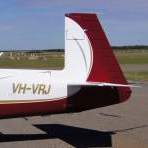-
Posts
803 -
Joined
-
Last visited

Mooney in Oz replied to mooniac58's topic in General Mooney Talk

Mooney in Oz replied to bnicolette's topic in Miscellaneous Aviation Talk

Mooney in Oz replied to mooniac58's topic in General Mooney Talk

Mooney in Oz replied to 65MooneyPilot's topic in Mooney Safety & Accident Discussion

Mooney in Oz replied to 65MooneyPilot's topic in Mooney Safety & Accident Discussion

Mooney in Oz replied to 65MooneyPilot's topic in Mooney Safety & Accident Discussion

Mooney in Oz replied to NickG's topic in Mooney Safety & Accident Discussion

Mooney in Oz replied to natdm's topic in Avionics/Panel Discussion

Mooney in Oz replied to natdm's topic in Avionics/Panel Discussion

Mooney in Oz replied to Kevin Harberg's topic in General Mooney Talk

Mooney in Oz replied to 201er's topic in General Mooney Talk
We have placed cookies on your device to help make this website better. You can adjust your cookie settings, otherwise we'll assume you're okay to continue.